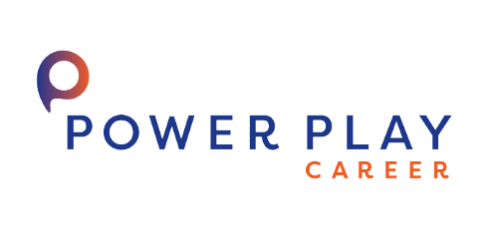Goal Setting and Getting Things Done
“ It’s not enough to be busy, so are the ants. The question is, what are we busy about?” — Henry David Thoreau
It’s not enough to be busy, so are the ants. The question is, what are we busy about?” — Henry David Thoreau
How many projects do you have on the go? Ten? Twenty? Thirty? What about your TO-DO list? Fifty? Seventy-Five? Over a hundred?
Just writing these numbers makes me feel overwhelmed. What about you? However, I do get up in the morning with the best intentions of crossing every item off of that list.
Here’s an example of what happened during one of my mornings. First, I have to say, I love mornings, and that is the time of day when I’m the most productive and energized. On one of these mornings, I was working away, and, oops, there’s something wrong with my email. Why am I not getting my emails?? I started looking into it. First, I got on the phone with the domain name host; then, I talked to Microsoft. Two hours have now gone by. OK, I better get back on that list and see what I can cross off. I can cross off my morning walk with the dog. It is now noon. Arg!
What happened to my productive, energized morning? It’s gone. Now I’m frustrated, like a toddler having a tantrum. Ok, maybe not that bad. I am now feeling even more overwhelmed than when I first started looking at my projects and to-do list. So, what do I do?
I procrastinate and think that maybe watching a bit of Netflix will relieve my stress. Yeah right! All that does is leave me with nothing to cross off my list.
I am always looking for ways to get better at setting goals and getting things done. I follow great teachers like Jim Rhon, Marie Forleo, Brooke Castillo, among many others who have taught me so much. Today, I would like to share with you a few things that I have learned about goal setting and getting things done.
First, let’s take a look at the big picture. What is it that you want? Now, if you don’t know what you want, how the heck are you supposed to get it? When I coach people in career development and ask them what their dream job is, they often respond with, “I’ll take anything.” That is a wide net with no focus. That is also exactly what they will get! Anything!
What if you did a little work on yourself and tried to really figure out what it is you truly want. Wouldn’t that be great? Some of you might think that sounds selfish, but what if you could really get what you want? Uncover that dream, that passion that is buried inside you? And when you do, guess what? The people around you will benefit immensely as well. It’s like putting on your own oxygen mask first on the plane before helping others. Otherwise, you will be no help to anyone.
At this point, you might be wondering, what does this have to do with getting things done? Well, let me promise you this. By the end of this article, I will give you five steps on how to do this, but for now, please bear with me. I promise you will understand.
Ok, so let’s go back to the big picture. Who would you like to be five years from now? If that’s too far away for you, how about 3 years or even 2 years. Pick a time in the future and see yourself there. Now think to yourself, WHO DO I WANT TO BE? What do I want to be doing? With whom? Sit down in a quiet place with a good cup of coffee or a beverage of your choice and write it down. Write down your thoughts and really think about them. You need to do a brain dump and get everything out of your head and onto the paper.
There are so many tools out there to help you with this. Below I will share three tools that I have used with my clients, depending on their specific needs.
1. The first one is how to find your Ikigai?
I believe most people know what Ikigai is. It is the buzzword of the past couple of years. However, for those of you that have not heard about it, Ikigai is a Japanese word that roughly translates as a reason for being, a reason to get up in the morning, or a ‘raison d’être’ as the French would say. It’s the simple process of asking yourself four basic questions:
What do you love?
What are you good at?
What can you be paid for?
What does the world need?
Answering the four questions will help you to uncover a clue to your purpose or what matters most to you. Pretty simple, right? Then why do so few people actually do this?
2. The second one is the Passion Test.
The Passion Test has inspired thousands to reshape their lives by discovering their passions and living according to what matters most to them.
With The Passion Test, people can identify their top five passions by taking the test and then learn exactly how to align their lives with their priorities. The creators of the test, Janet and Chris Attwood developed this easy-to-follow step-by-step program of action. I am a certified Passion Test facilitator and have guided many people through this process. I have been lucky enough to witness some pretty awesome discoveries.
Finally, this last tool might surprise you as it is usually used by organizations.
3. The third one is the SWOT Analysis
The SWOT Analysis Technique, which stands for Strengths, Weaknesses, Opportunities, and Threats, is credited to Albert Humphrey, a management consultant. (See my previous post for more details).
However, I have discovered that you can use this tool on individuals as well, and it is then referred to as the Personal SWOT ANALYSIS. I love this tool and use it often in career development to help my clients with:
- Preparing for a job interview
- Applying for a promotion
- Making a career change
- Creating a personal brand
- One of my favourites: Setting goals in each quarter
You can also use it in other areas to improve your life, relationship or business, allowing you to examine your life from a different point of view and to discover actions you can take to live your best life.
Ok, so by now, you have picked a tool, or two or all three of them, or even something else out there.
Now, what do we do with all this information? First, we will break it down into quarters. Yes, in quarters. Ninety days is the perfect amount of time to set your goals. This timeframe stops you from trying to focus on all of your goals, objectives, and tasks for the whole year. Instead, it allows you to take your goals and then break them down into 90-day stretches, which allows you to then break them down into daily, actionable tasks.

“Give me six hours to chop down a tree, and I will spend the first four sharpening the axe.”
– Abraham Lincoln
You can start by doing a brain dump; get everything out of your head. Then, take a piece of paper or a document on your computer and write down everything you want to get done: the projects you need to work on, the meetings you must attend, the routines you have set up, etc, etc, etc. Ok, I know, that’s a lot of work, but after you have done it once, you can navigate through your next three months knowing exactly what to do.
Now you move on to weekly. On Mondays, you should set some time aside to plan your week. Plug everything in your calendar, but not too tight. You want to allow for those disruptions right?
Ok, you’ve got this! This is a lot of information, and you may not believe what I’m about to suggest to you next!
The Technique
For the next 90 days, EACH DAY, you will pick TWO objectives to be completed that day, and you will block off an hour or two for each as well as selecting eight to ten tasks from your to-do list. Clearing your mind and your calendar will actually make you more productive. I know, I too, had a hard time letting go of my 100 item list. I was having anxiety attacks! Not only that, but I then realized that all I needed to do for that quarter was on my brain dump list and that I could simply review it daily, and it was not cluttering my mind or my calendar. It was so liberating to be able to actually cross off everything on that list for the day.
If you start the day with one or two objectives to be completed that day, you are going to make significant progress over time on any of your projects and procrastinate less, a.k.a. watching Netflix!
Distractions, interruptions, shiny objects, an interesting article that you discover while doing research and want to read, Instant Messages, a phone call, an email, or something that doesn’t work and needs your attention, and the list goes on and on.
You are sidetracked and then off to places you don’t want to go to. With this technique, you can laugh at those distractions in their faces because you only have TWO THINGS to get done!
Let’s take a look at these numbers: two main objectives PLUS eight tasks DAILY, over 30 days, that’s 60 meaningful, prioritized project tasks per month, which adds up to 180 per quarter. A great matrix to keep a tab on!
If you want to take it a step further, you can actually identify possible problems and interruptions that will prevent you from reaching your objectives.
Week in review
At the end of the week, review what you have accomplished. If two objectives are too much, then start with one. Build momentum, and in no time, you will be back at two.
Are you less overwhelmed? I sure am. I’m actually excited to come to my desk in the morning with two main objectives, tasks or projects to do that day, and then the little tasks in between. My calendar makes me calm instead of anxious.
Summary of the Technique’s five steps
1. Start with your future BIG PICTURE (five, three or two years from now) with the help of tools and reflection.
2. Do a brain dump and write down everything you need to do to reach your goal of the BIG PICTURE.
3. Every Monday, set some time aside and plan your week by identifying two objectives and eight tasks per day.
4. Execute.
5. Celebrate.
“The bad news is time flies. The good news is you’re the pilot.”
— Michael Altshuler

I would love to hear from you in the comments below. Is this technique making you feel less overwhelmed? What are some techniques you have used for goal setting and getting things done?
If you would like guidance planning your next quarter or career development to create a life you love, I’m here to help.
email: info@joannesavoie-malone.com
text: 613-749-3210


Hi Joanne,
I have really learned a lot from this post! I was going through this list you have and started asking myself some of these questions and honestly didn’t have an answer for most of them! I am well seasoned in my industry and have a lot on my plate as everyone else does. I think I get so caught up in performing I have lost sight of what makes me do it!
I will definitely use some of the tips and try to get back to what it is that makes me tik and I am hoping to find the joy in what I do again.
Also, there are some really good quotes in this article! Good job! Very motivating!
Thanks,
Chad
Thank you, I love inspiring people, and you are right, we get so busy on stuff that we sometime forget our why. So important to check in with ourselves, once in a while 🙂
I have always liked Abraham Lincoln’s quote about sharpening the axe. And I find myself quoting it quite often.
Setting goals the right way is very important. I have been struggling to learn this and it has made me see a few of my projects go down the drain because of not handling goals properly. Your post has helped me in a couple of ways. Thank you very much!
Thank you Ann, yes, me too, always struggling to set proper goals, hence why I love learning and researching on this subject. I am getting better and love the 2 goals a day 😁. Wishing you all the best and that you reach your goals in 2021!
I really enjoyed reading your article about goal setting. I think the most popular method for goal setting is the SWOT analysis you mentioned. Another is creating S.M.A.R.T goals; specific, measurable, attainable, relevant, and time-based goals. I had not heard about finding one’s Ikigai or the passion test but I loved reading about them. I think I will utilize these techniques when I plan out my goals for the rest of the year.
Hello Rachel, yes, there are so many amazing tools out there. And creating S.M.A.R.T goals is so important to stay focussed once you have identified what truly matters to you and nobody else. Enjoy exploring!
Thanks for sharing this article. I enjoyed reading it and am really glad that I did. Often we can easily get too relaed in our gopals and routines. That is why it can often be beneficial to read articles like this. They remind you of the standard you should be keepining to. So thanks again.
Thank you, I’m glad you enjoyed this article and yes, we constantly need reminders of all the great tools out.